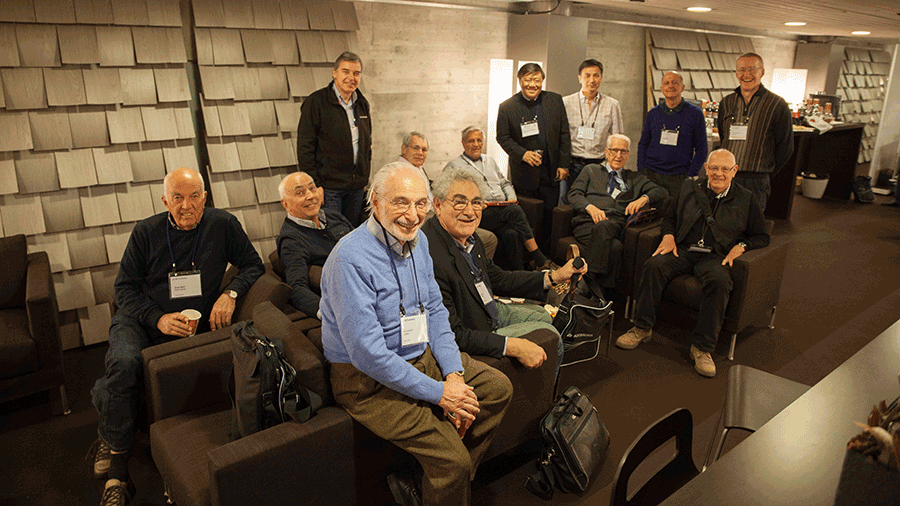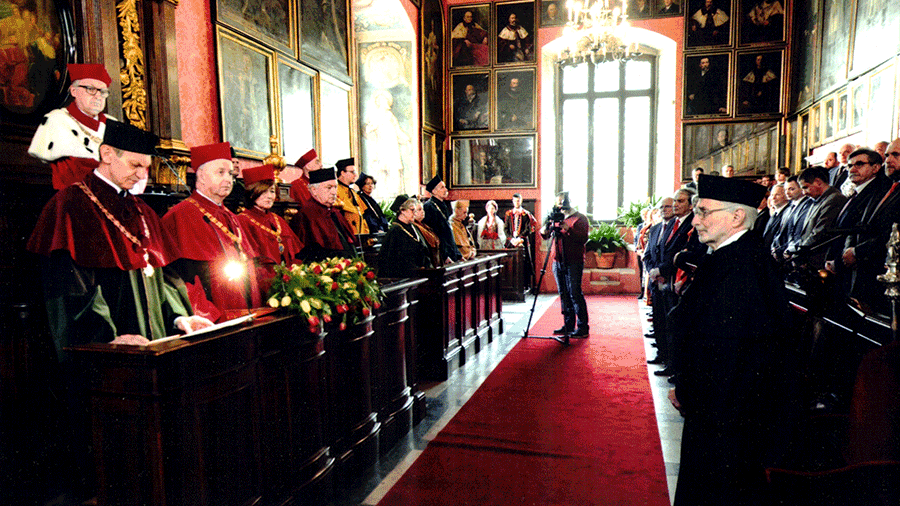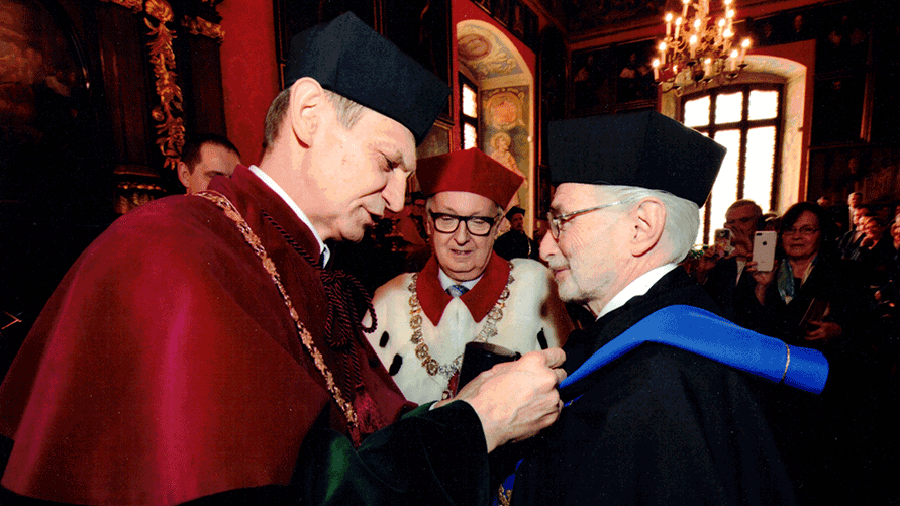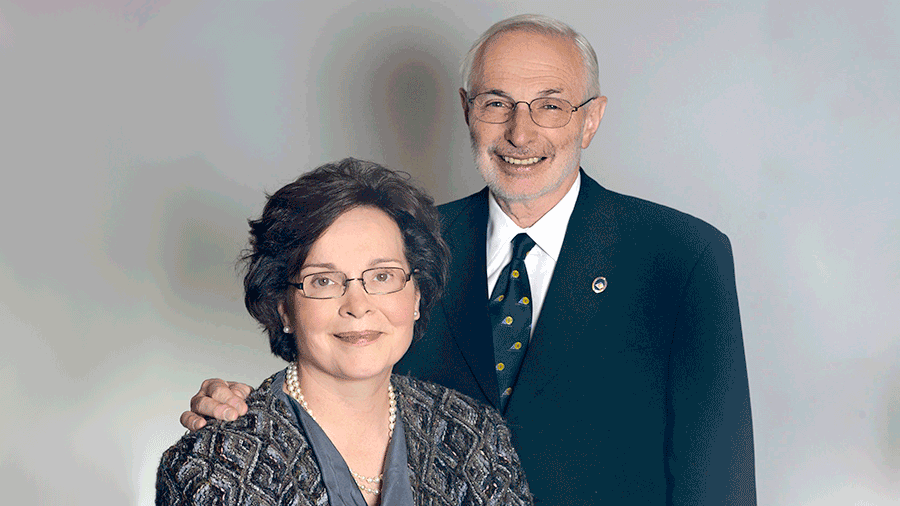Joseph Schatzker: In his own words
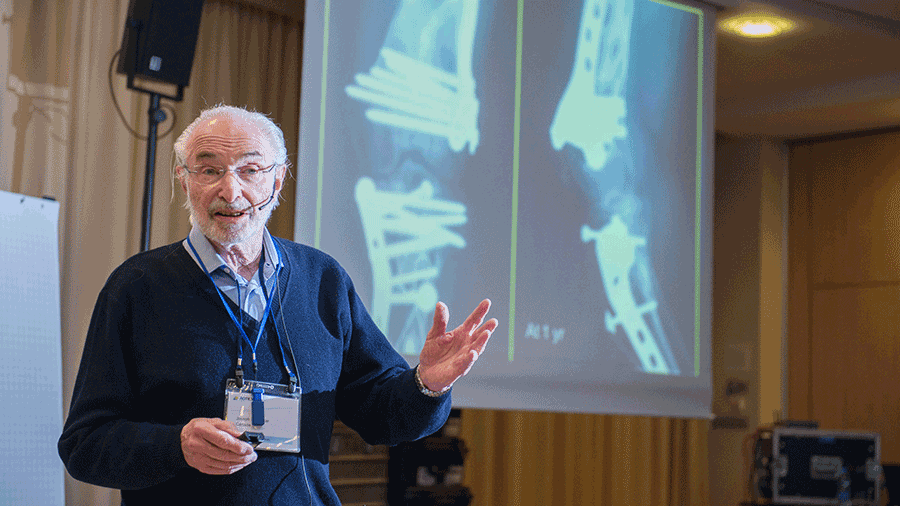
By: Vidula Bhoyroo, Project Manager/Medical Writer, AO Education Institute
Joseph Schatzker, CM, MD, BSc(med), FRCS(C), is the author of the universally used Schatzker Classification of Fractures of the Tibial Plateau published in 1974. He was the AO President from 1998 to 2000 and became an Honorary Trustee (2000−present). He was also the senior editor of AO Surgery Reference (2008−18). Currently, he is Emeritus Professor of Surgery, University of Toronto, and is an active orthopedic surgeon, Sunnybrook Health Science Center, Toronto, Canada. Joseph Schatzker has been honored with more than 30 visiting professorships in Europe, Asia, Australia, North America, and South America.
Globally, Schatzker has received too many awards and recognition to list here. A selection of these include the following: the Medical Alumni Scholarship for being first in the graduating class of 150 students in 1960; North American AO Man of Distinction, awarded for clinical leadership and excellence in teaching of AO techniques, 1977; Colin Woolfe Award for excellence in Postgraduate Medical teaching, University of Toronto, 1989; President Orthopaedic Trauma Association of North America, 1990; Honorary Professor and Director of Orthopaedic Department Henan Provincial People’s Hospital, PR China, 2003; and University of Wroclaw Poland Gold Medal for Scientific Contributions, 2018.
Schatzker is a member of various organizations, such as AO-ASIF Foundation, 1984–present; AO Switzerland, 1972–present; AO North America Steering Committee, 1992–present; Orthopaedic Trauma Association, 1984–present; SICOT, 1969–present; Canadian Orthopaedic Association, 1968–present; American Orthopaedic Association, 1989–present; and board member of the MEM Foundation North America, 1984–present.
On the publishing side Schatzker is a prolific writer, editor, and contributor. In 1987 with Marvin Tile, MD, he co-authored a book titled The Rationale of Operative Fracture Care. He is the author of Maurice Edmond Müller─In His Own Words, and editor of The Intertrochanteric Osteotomy book. For the last 60 years, he has published extensively in peer-reviewed journals and has participated and presented in over 500 national and international professional orthopedic meetings.
What made you decide to study medicine?
My stepfather was an internist who trained with the medical greats of Vienna in the early 20 years of the 20th century. He was devoted to the practice of medicine and his high morals standards, and his values of human life and prevention of suffering served as my inspiration to become a physician.
Why did you choose to be an orthopedic surgeon?
I was an excellent student of human anatomy, to the point that my anatomy professor hired me while I was still a student to tutor dental students in anatomy and histology. When I graduated from medical school in 1960, we were required to spend a year rotating through the different specialties before making a definitive choice for our future career. My second rotation of four weeks was fortunately on orthopedic surgery. It was for me like an epiphany. Here was a specialty which married anatomy with physiology and diseases of the musculoskeletal system. It fired my imagination, and I decided that orthopedic surgery will be my future.
How did you hear about the AO?
In Toronto, while I was training to be an orthopedic surgeon, every autumn we had a major meeting which attracted the most important orthopedic surgeons of the day. One day the director of our training program phoned and ordered me to meet at the airport an incoming professor from Switzerland, a certain Maurice Edmond Müller. As I speak German fluently, I was asked to spend a week as an interpreter and guide for Professor Müller. This was my second epiphany. Suddenly I was exposed to a concept of fracture treatment which relied on surgery rather than conservative treatment. I saw examples of the outcome of treatment which surpassed anything conservative treatment had to offer. I immediately decided that I had to go to Switzerland and study during my year as an overseas fellow with Professor Müller and learn everything the AO had to offer.
How do you perceive AO in your growth as a surgeon?
During my fellowship year with Professor Müller, he asked me to translate the AO Manual of Operative Fracture Treatment, a book the AO was writing in 1967; one that became the bible of operative treatment of fractures. I translated the book and I also had to invent many of the English biomechanical terms, which the AO was first to use as the principal basis of its concepts of stable internal fixation. The German book was published in 1969, and the English edition was published in 1970. As English was becoming the leading scientific language, my translation opened the teaching of the AO to the international community of trauma surgeons. It helped to launch the AO revolution of fracture treatment which swept the world. When I returned to North America, I became single handed the major AO exponent of operative fracture care, and I was mostly responsible for breaking down the barriers of conservative fracture treatment which up to that time were the traditional forms of treatment. Thus, AO was pivotal in my becoming a leading trauma surgeon. Subsequently, I played a decisive role in the AO method of fracture surgery, which became the standard of treatment not only in North America but also as an international lecturer I was instrumental in spreading the AO method around the globe.
For many years you collaborated closely with Maurice Edmond Müller, who is often referred as the spiritual father of the AO. Can you relate an encounter with him?
Professor Müller was the most phenomenal technical surgeon, and he had the most inquisitive and the most imaginative mind. Organization was his passion. One day while guiding Professor Müller through the Los Angeles zoological garden it took only the first 30 minutes of the train ride around the zoo before he turned to me and said, “See Joe, if they would only reorganize the whole zoo and place this animal here and this animal there the whole zoo would begin to make sense.”
Another unforgettable vignette occurred in the early days of Professor Müller in Bern. He took me in 1970 to the outskirts of the city, to Melchenbühl Weg, where the Müllers were building their new home. Behind their property was a huge green pasture. Maurice turned to me and said: “See Joe, here I will design and build the most modern community where people will enjoy the pleasures of modern housing and they will be exposed to spiritual inspirations.” This green pasture in time became a new modern community and, in its center, stands the famous Paul Klee Museum which the Müller family donated to the city of Bern.
What do you want to tell the next generation of the AO surgeons?
The most important lesson to learn is never to give up. If you are convinced that you are on the right way, that you have discovered the right direction to take, you must not be discouraged by opposition. One must continue one’s path and in due course one will prevail. This is the lesson I learned from Professor Müller, and this is the lesson I would like to pass on to the next generation of AO surgeons.
You might also be interested in:
- Reading more AO history stories
- Learning about the AO archive and history project
- Viewing the AO image collection
- Searching our online AO library catalog


